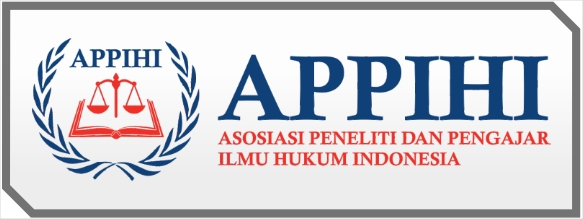Analisis Tingkat Kecemasan Siswa Pada Pembelajaran Matematika Kelas X Di MAS YMPI Tanjungbalai Tahun Pembelajaran 2022/2023
DOI:
https://doi.org/10.55606/sscj-amik.v1i3.1328Keywords:
Kesulitan Belajar, Kecemasan Matematika, Pembelajaran Matematika.Abstract
Mathematics is often considered a difficult subject by students so it is not uncommon for students to experience learning difficulties such as experiencing anxiety when learning mathematics, therefore this study aims to describe the level of anxiety, describe the factors that cause anxiety, and how anxiety affects student learning difficulties class X at MAS YMPI Tanjungbalai. In this study, the number of research subjects was 36 students with a sampling technique, namely purposive sampling. Data collection in this study was in the form of data field notes using observation, questionnaires, interviews and documentation. Learning difficulties can be interpreted as a condition in the learning process which is characterized by the presence of certain obstacles to achieve learning outcomes. In this study it refers more to the problem of student anxiety which is an obstacle in achieving learning objectives. This research is a type of qualitative research and the validity technique in this study uses time triangulation. Based on the results of data analysis and discussion regarding the level of student anxiety in learning mathematics, it can be concluded that from 36 students, 8 (22.2%) students experienced high levels of anxiety, 23 (63.9%) students experienced moderate anxiety levels and 5 (13.9) %) students have a low level of anxiety. The anxiety of the students with the low anxiety category was more responsive and very enthusiastic in learning mathematics compared to the other two categories, namely the moderate anxiety category and the high anxiety category. Based on data analysis on average student learning outcomes, students with high levels of anxiety will have an average learning outcome lower than students with medium anxiety levels and high anxiety levels.
References
Abdurrahman, Mulyono. 2012. Pendidikan Bagi Anak Berkesulitan Belajar: Teori, Diagnosis, dan Remediasinya. Jakarta: PT.Rineka Cipta.
Ali Imron. 1996. Belajar dan Pembelajaran. Jakarta: Dunia Pustaka Jaya Jakarta.
Ardianto, P. 2018. Gejala kecemasan pada siswa sekolah menengah kejuruan.JIBK, 9(2),87-91.
Auliya, R. N. 2016. Kecemasan Matematika dan Pemahaman Matematis. Formatif: Jurnal ilmiah pendidikan MIPA, 6(1), 12-22
Budi Arief. 2013. Pengelola Kecemasan Siswa Dalam Pembelajaran Matematika. Jurnal nasional Pendidikan Matematika Universitas Negeri Yogyakarta,Yogyakarta.
Djiwandono, Sri Esti Wuryani. 2009. Psikologi Pendidikan Edisi Revisi. Jakarta: Gramedia.
Dzulfikar.2016. Kecemasan Matematika Pada Mahasiswa Calon Guru Matematika. JMPM Jurnal Matematika dan Pendidikan Matematika. Universitas Pesantren Tinggi Darul ‘Ulum.
Freeman, 2006. Mathematical Anxiety. [Online]. Tersedia: http://en.wikipedia.org/wiki/mathematicalAnxiety
Fitriana Sistyaningtiyas.2013. Hubungan Antara Tingkat Kecemasan Dengan Prestasi Belajar Matematika Siswi Kelas XI IPA di SMA Negeri 1 Kayen Pati. Skripsi. Fakultas Kedokteran Universitas Muhammadiyah Surakarta, Surakarta.
Ikhsan, M. 2019. Pengaruh Kecemasan Matematis terhadap hasil belajar matematika. Defermat: Jurnal Pendidikan Matematika, 2(1), 1-6.
Janurti, N. K., Dibia, I. K., & Widiana, I. W. 2016. Analisis Kesulitan Belajar dalam Pembelajaran Membaca Cepat Siswa Kelas V SD Gugus VI Kecamatan Abang. E-Journal PGSD, Universitas Pendidikan Ganesha, 4(2), 1–10.
Jumrawarsi. 2020. Peran seorang guru dalam menciptakan lingkungan belajar yang kondusif. Ensiklopedia education review, 2(3), 50-54.
Lexy J Moleong. 2011. Metode Penelitian Kualitatif. Bandung: PT. Remaja Rodakarya.
Mainey, F. 2004. Teaching Techniques in Overcoming Mathematics Anxiety. [Online]. Tersedia: http://mathculator.com/Downloads/Files/Papers% 20and%20articles/Teaching%20Techniques%20in%20Overcoming%20Mathema tics%20Anxiety.doc [15 Maret 2022]
Mulyani Sumantri dan Nana Syaodih. 2007. Perkembangan Peserta Didik. Bandung: Universitas Terbuka.
Munirah. 2018. Peranan guru dalam mengatasi kesulitan belajar siswa. Jurnal pendidikan agama islam,3(2),111-115.
Nurjanah, I., Alyani, F. 2021. Kecemasan matematika siswa sekolah menengah pada pembelajaran matematika dalam jaringan. Jurnal Elemen, 7(2), 407-424.
Paulus. 2014. Kecemasan matematika dan cara menguranginya.PHYTAGORAS,3(2), 75-84.
Smith, M. R. 2004. Math Anxiety: Causes, Effects, and Preventative Measures. A Senior Thesis submitted in partial fulfillment of the requirements for graduation in the Honors Program, Liberti University
Stuart, Gail Wiscarz,sundeen, Sandra j. 1998. Buku Saku Keperawatan Jiwa(3). Jakarta: EGC.
Sun, Y., Pyzdrowski, L. 2009. Using technology as a tool to reduce mathematics anxiety. The Journal of Human Resource and Adult Learning Vol. 5, Num. 2.
Supriatna, A., Zulkarnaen, R. 2019. Studi Kasus Tingkat Kecemasan Matematis Siswa SMA. Prosiding Seminar Nasional Matematika Dan Pendidikan Matematika, 2(1), 730-735.
Suryanto,dkk. 2017. Evaluasi Pembelajaran. Tanggerang Selatan: Universitas Terbuka.
Zakaria, E., Nordin, N.M. 2007. The effects of mathematics anxiety on matriculation students as related to motivation and achievement. Eurasia Journal of Mathematics, Science & Technology Education, 2008, 4(1), 27-30.






















